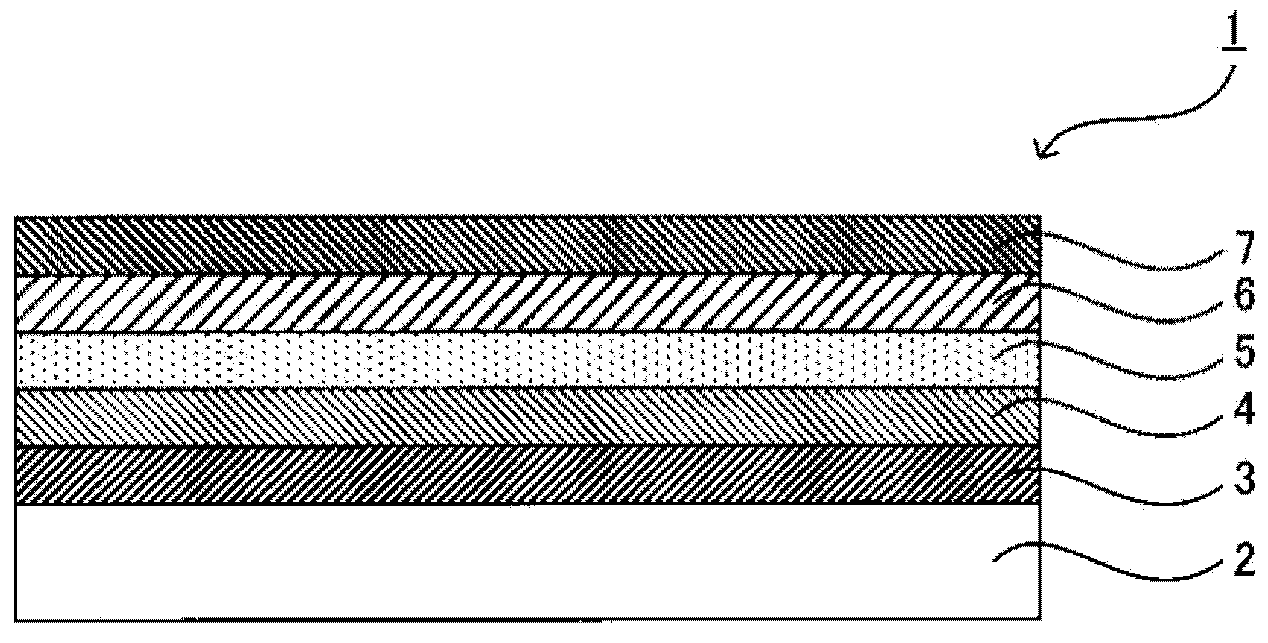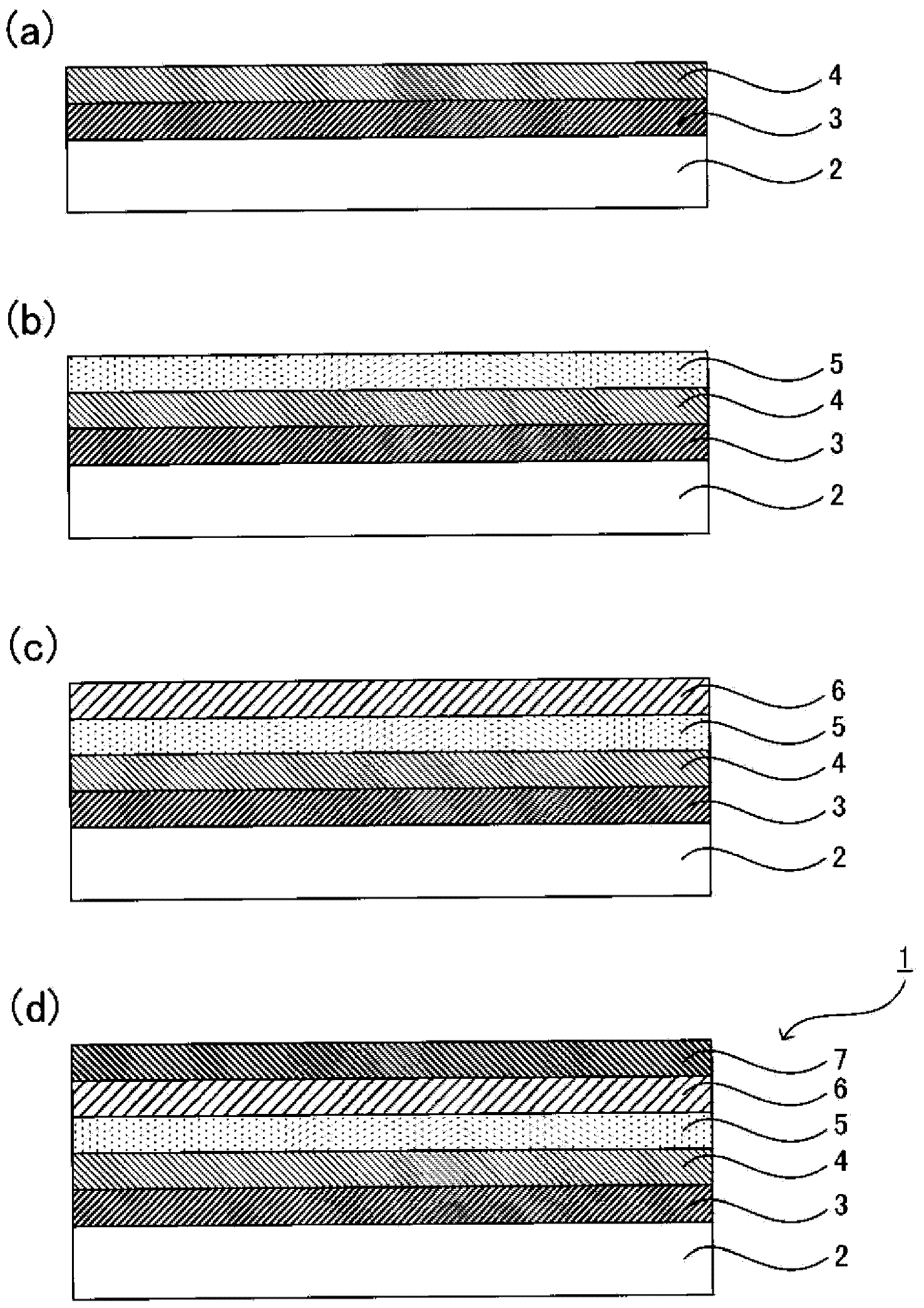Organic electroluminescent element, method for manufacturing organic electroluminescent element, and coating liquid for electron injection/transport layer
An electroluminescent element and electron injection technology, which is applied in the manufacture of electroluminescent light sources, electrical components, semiconductor/solid-state devices, etc., can solve problems such as poor production efficiency, shortened lifespan, and difficulty in uniformly controlling film thickness. Achieve high luminous efficiency and improve lifespan
- Summary
- Abstract
- Description
- Claims
- Application Information
AI Technical Summary
Problems solved by technology
Method used
Image
Examples
Embodiment 1
[0238]On a glass substrate of 25 mm x 25 mm x 0.7 mm (manufactured by Sanyo Vacuum Co., Ltd.), ITO having a thickness of 150 nm was patterned into stripes to serve as an anode. This ITO substrate was subjected to ultrasonic cleaning in the order of neutral detergent and ultrapure water, and UV ozone cleaning for 10 minutes.
[0239] On the ITO substrate, a PEDOT-PSS thin film (thickness: 30 nm) was formed as a hole injection layer. The PEDOT-PSS thin film was formed by applying a PEDOT-PSS solution (manufactured by Bayer, Baytron P AI 4083). After coating the solution, it was dried at 200° C. for 30 minutes using a hot plate in order to evaporate the solvent.
[0240] On the hole injection layer, poly[(9,9-dioctylfluorenyl-2,7-diyl)-co-( 4,4'-(N-(4-sec-butylphenyl))diphenylamine)](TFB) thin film (thickness: 10 nm). The TFB thin film was formed by dissolving TFB in xylene at a concentration of 0.4% by weight to prepare a solution, and applying the obtained solution by a spin...
Embodiment 2
[0247] Except having used LiBPh represented by the following formula instead of LiBq to form an electron injecting and transporting layer, it carried out similarly to Example 1, and produced the organic EL element.
[0248]
reference example 1
[0250] Except having used Ca instead of LiBq to form an electron injecting and transporting layer, it carried out similarly to Example 1, and produced the organic EL element.
[0251] [evaluate]
[0252] A voltage was applied between the anode and the cathode of the organic EL elements of Examples 1 and 2 and the reference example, and a voltage of 10 mA / cm was measured. 2 current efficiency at the time. Table 4 shows the relative ratio when the current efficiency of Reference Example 1 was set to 100.
[0253] [Table 4]
[0254]
[0255] According to Table 4, the organic EL elements of Examples 1 and 2 using an organoboron compound showed favorable characteristics similarly to the organic EL element of Reference Example using Ca.
PUM
 Login to View More
Login to View More Abstract
Description
Claims
Application Information
 Login to View More
Login to View More - Generate Ideas
- Intellectual Property
- Life Sciences
- Materials
- Tech Scout
- Unparalleled Data Quality
- Higher Quality Content
- 60% Fewer Hallucinations
Browse by: Latest US Patents, China's latest patents, Technical Efficacy Thesaurus, Application Domain, Technology Topic, Popular Technical Reports.
© 2025 PatSnap. All rights reserved.Legal|Privacy policy|Modern Slavery Act Transparency Statement|Sitemap|About US| Contact US: help@patsnap.com



